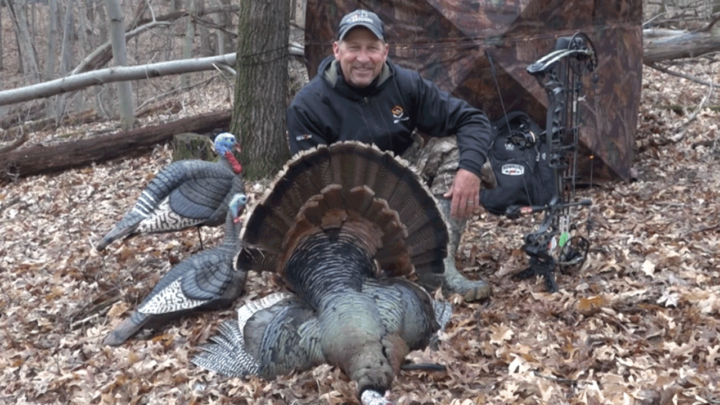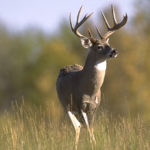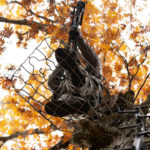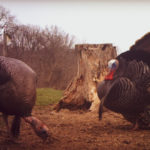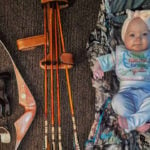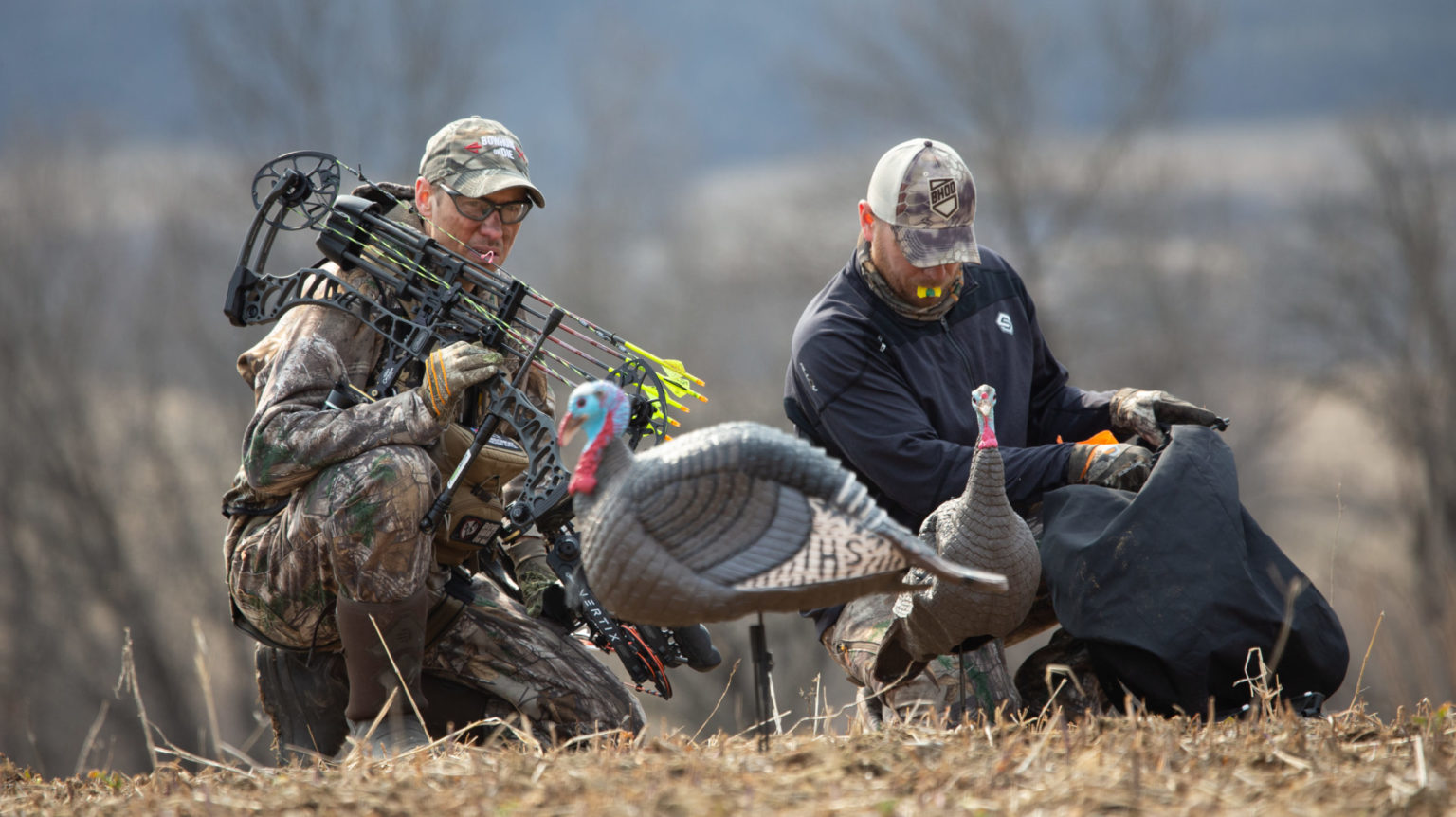
Whether you have taken turkeys with a gun or it’s your first time in the turkey woods, there is a challenge out there waiting for you.
It’s time to make some stick and string music on your next long beard. There is numerous challenges to calling in and taking a long beard the old fashion way.
First you have to take to the woods with the right equipment. Now you don’t have to go break the bank getting all new gear just to hunt turkeys.
You can use your same equipment you hunt deer or other big game animals, it will just take some tweaking to get your set up ready to rock and roll this spring.
In this first article (two part series) I’ll cover the basic set up and equipment that is recommend to belly up a turkey this spring or fall.
In this article we will discuss the set up most recommended , the camo and concealment needed, shot placement on a standing or strutting turkey, and practicing with your equipment to get ready to play some stick and string music.
Well let’s get our band warmed up. First is your bow set up. As I stated you don’t need to change much from what you would use for other big game.
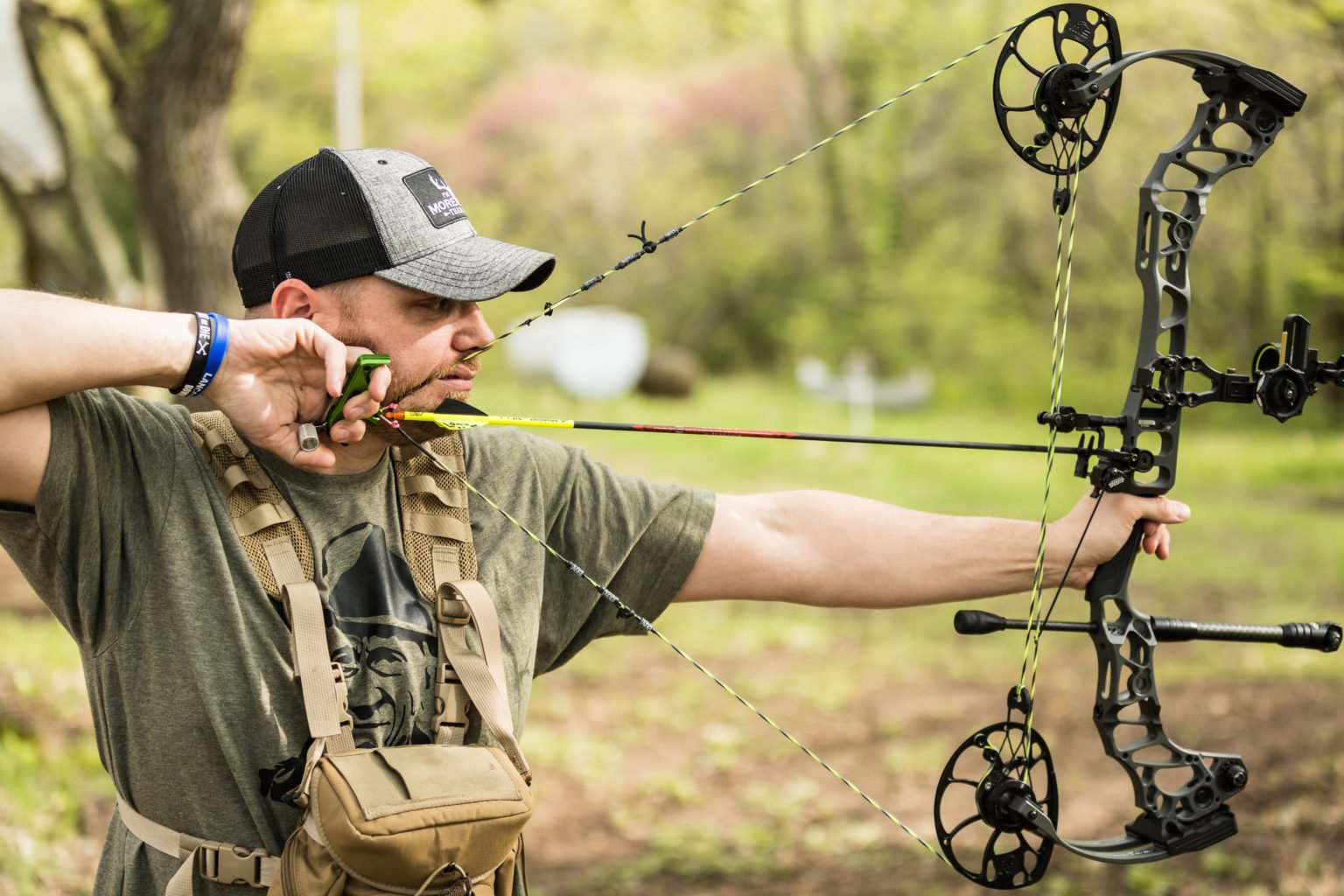
Although I would recommend that if you shoot your bow for big game at high poundage to back it down a bit. Now I’m not saying that if you’re shooting eighty pounds to back your bow down to forty.
What you do need to keep in mind is that you may have to hold your bow back at full draw for a long period of time waiting for the turkey to close the distance or give you that right shot.
I like to be able to hold back at full draw for several minutes without extreme fatigue setting in.
Don’t forget that you can be the best woodsman and caller around but you’ll be eating tag soup year after year if you can’t hit what you’re aiming at.
So what am I saying or recommending? Shoot poundage that is comfortable to you and that you can hold at full draw for several minutes.
Now, should I use mechanical or fixed blade broad heads? This is going to depend on personal preference, but there are some things that you need to consider.
If you are going to be shooting out of a pop up ground blind with shoot-thru windows you are going to be much safer with fixed blade broad heads, because mechanical blades may pre deploy prior to hitting the bird from the shoot-thru mesh catching on the mechanical blades.
If I’m not shooting through windows I prefer to use mechanical broadheads. I do this because some of the new mechanicals on the market offer a larger cutting diameter which will result in an easier recovery of your bird.
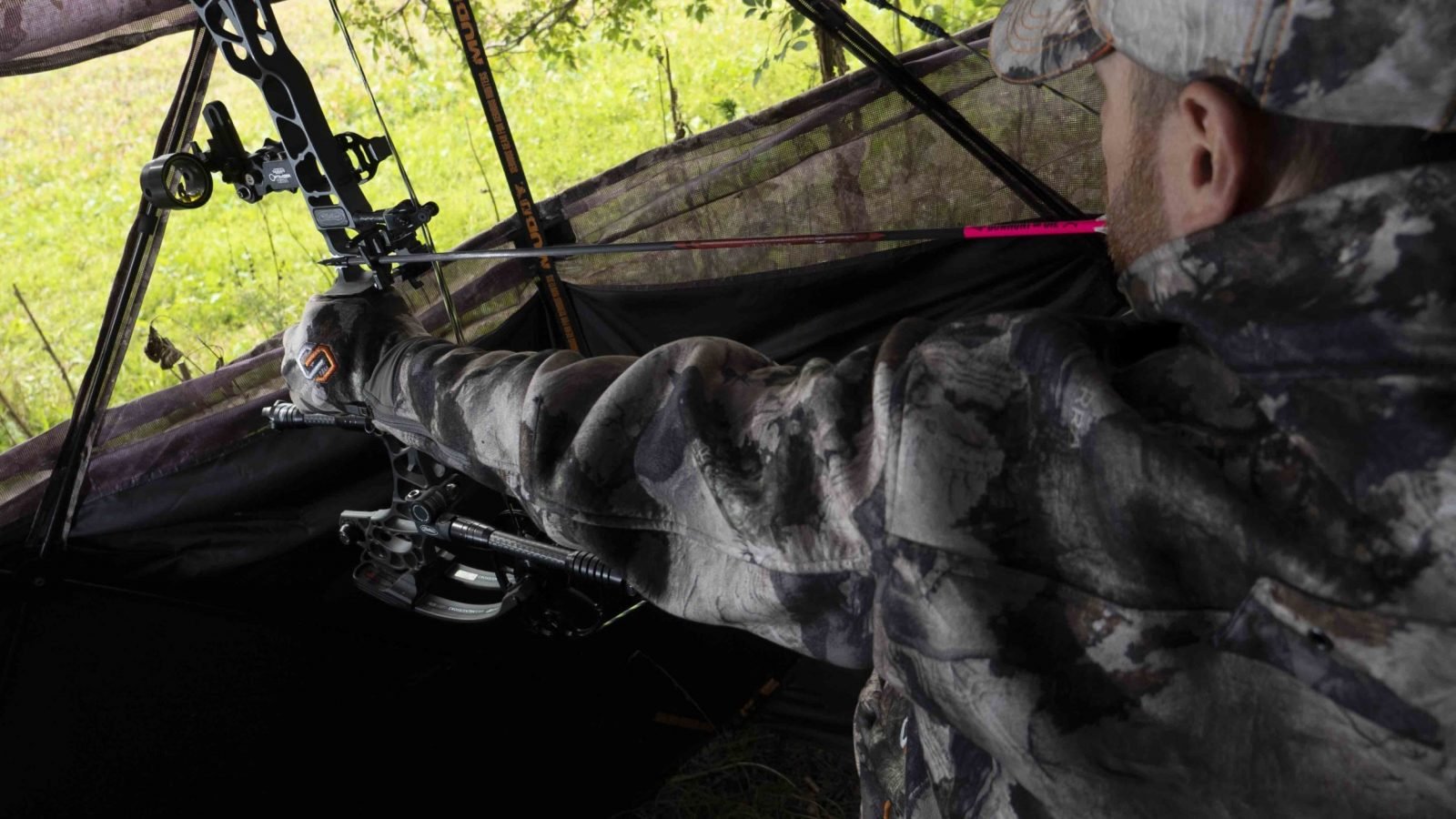
Also, more of your arrow’s energy is transferred to the bird with mechanicals than fixed blades. Turkeys don’t have the bone mass as a deer, so extreme penetration is not as important as tissue damage and accuracy.
Now that we’ve covered the basics on our bow setup let’s talk about concealment and being able to hide our movements when drawing back on that long beard.
It is said that a turkey’s eye sight is five times better than that of a humans. Through my years of turkey hunting (especially after I’ve been busted) it seems like their eye sight is a thousand times better.
So, should a hunter use a pop up ground blind, a blind with just netting, or just a make shift blind using the surrounding brush? Well the answer depends on the situation.
What I like about a pop-up style ground blind is its versatility. Often I’ve glassed long beards strutting out in open areas that provide little or no cover.
Unlike a deer, you don’t need to set up your pop up ground blind days or even weeks ahead of time.
You can pop up a ground blind and literally minutes later turkeys can walk with in feet of you and won’t pay any attention to the blind. If I can, I prefer to brush in my pop up, but it is often not needed.
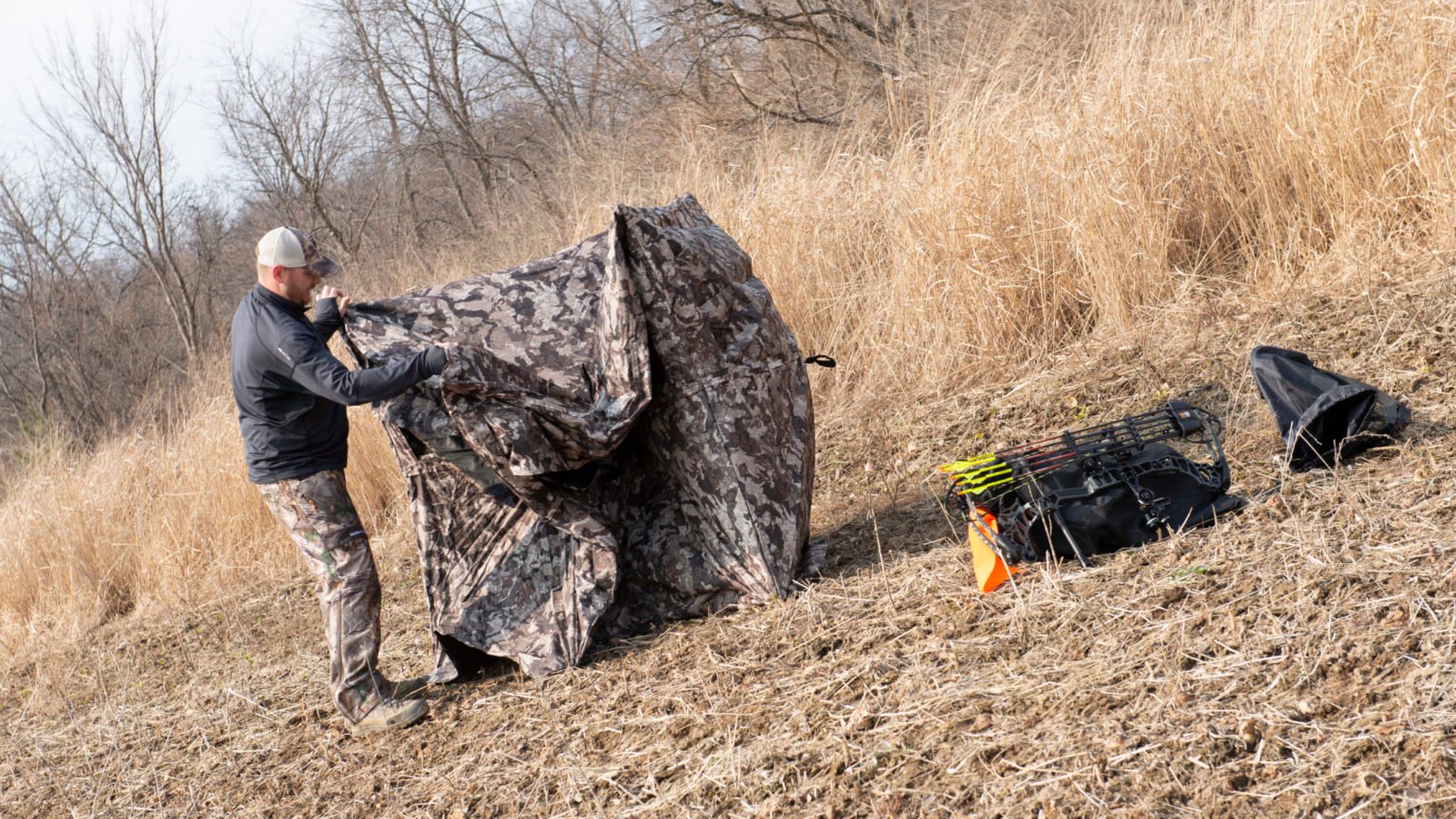
Last year I popped up my ground blind fifty yards from the woodline in a plowed field. As day light approached the turkeys flew down and I had birds within yards of my blind strutting and feeding past. My blind stuck out like a pimple on a nose, but the birds didn’t seem to mind.
Consider if you are going to be using a pop up ground blind that you need to get one that is big enough for you to draw your bow back without hitting the walls or having parts of your bow sticking out. Next is being able to view approaching turkeys from all different sides of your blind.
Go down to your local sporting goods store that have blinds on display and try them out, crawl in them and check them out, really test drive them before you make your final decision.
Also keep in mind the weight of your blind. If you hunt areas that have a further walk to get to your desired location, you’re going to want a lighter blind. I prefer my blinds to weigh less than twenty pounds.
Now I also have hunted the Black Hills in South Dakota and hunted in rugged and rough terrain. I prefer to carry just netting and some stakes with me to make a temporary blind.
That allows me to be mobile but at the same time allows for some concealment. Under the worst case scenario I will use the surroundings to make a concealment location. All in all, I prefer to use the manufactured pop up blinds on most occasions if possible. If I’m running and gunning or hunting in rugged terrain, I will transition over to using camo netting and some stakes.
Since we are on the topic of concealment I would like to remind you not to forget about the fletching on your arrows. We all like to shoot bright colored fletching, but don’t forget that turkeys can see a half a dozen florescent arrows sitting in your quiver.
You can buy netting specifically designed to cover your arrow’s fletching. I choose to make mine using an old face mask and some Velcro that I picked up at a fabric store. Remember, it doesn’t have to be fancy it just has to cover up your bright colored fletching.
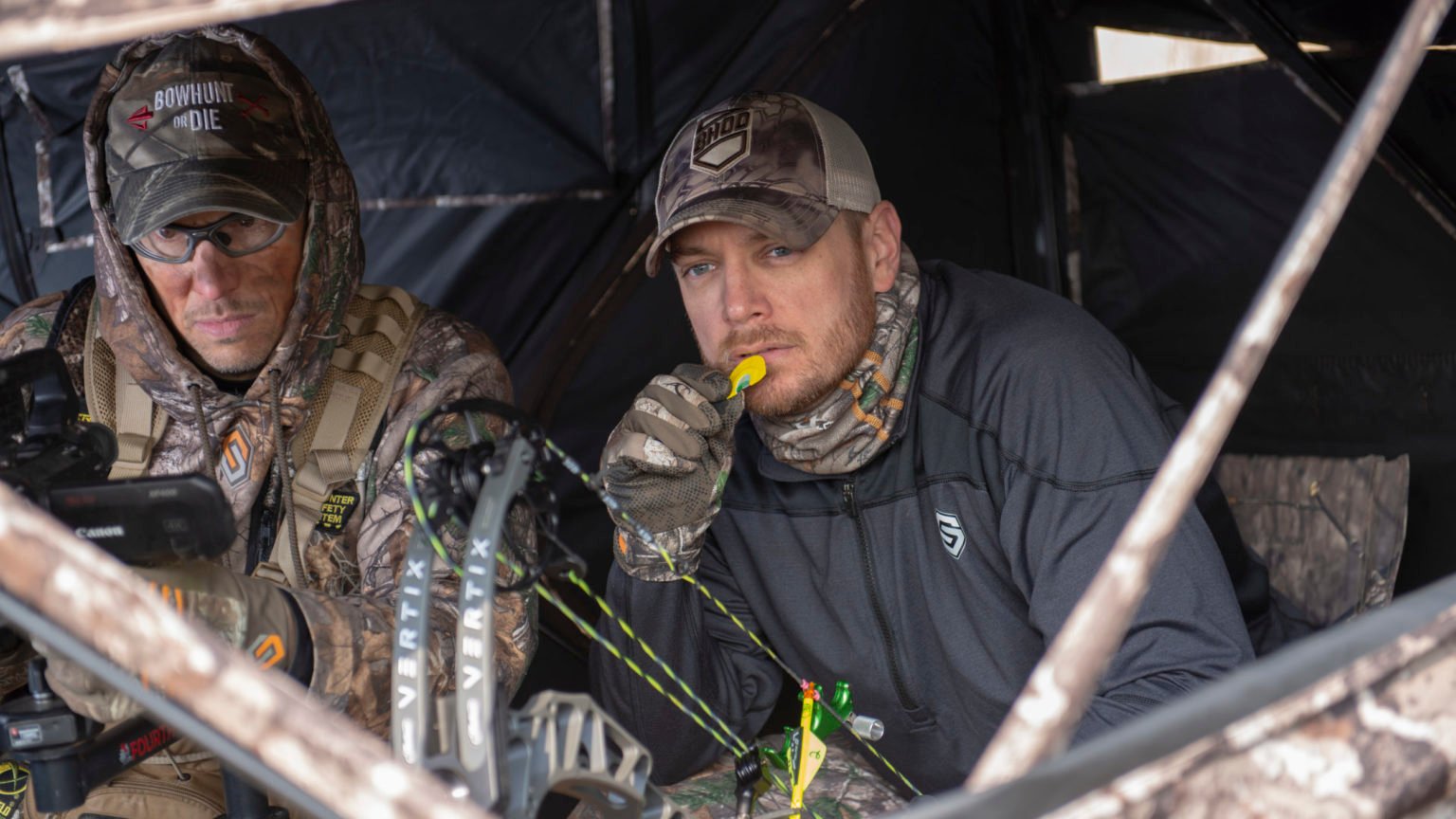
You will also want a good facemask. Now I know this sounds like a no brainer, and we all know we need to either camo your face with face paint or wear a face mask.
That’s nothing new, but if you are like me I don’t like to wear camo face paint. The big reason is that here in Wisconsin in the later time periods the mosquitoes will either carry you away our drain you of the last drop of blood! For any one that has had a blown opportunity because of a poorly designed face mask you know what I’m talking about.
Avoid any face make that has peep holes cut out or any face mask that covers your face like a wedding veil. When drawing back your bow often these styles of facemasks twist and obscure your vision.
Choose a facemask with a large opening to view through. I prefer the face masks with the wire-frame nose piece and the three quarter style. Why I like the three quarter style is that it takes less movement to put on.
All I do is wear the mask down and around my neck while walking. When I need it up and on, all I do is just pull it up. A full face mask is nice but often I find myself halving to take off my hat the sliding the mask down over my head then putting my hat back on.
Don’t get me wrong this works but its more movement and it takes more time. Whatever style you choose pick a face mask with good comfortable fit and one that will not obscure your vision.
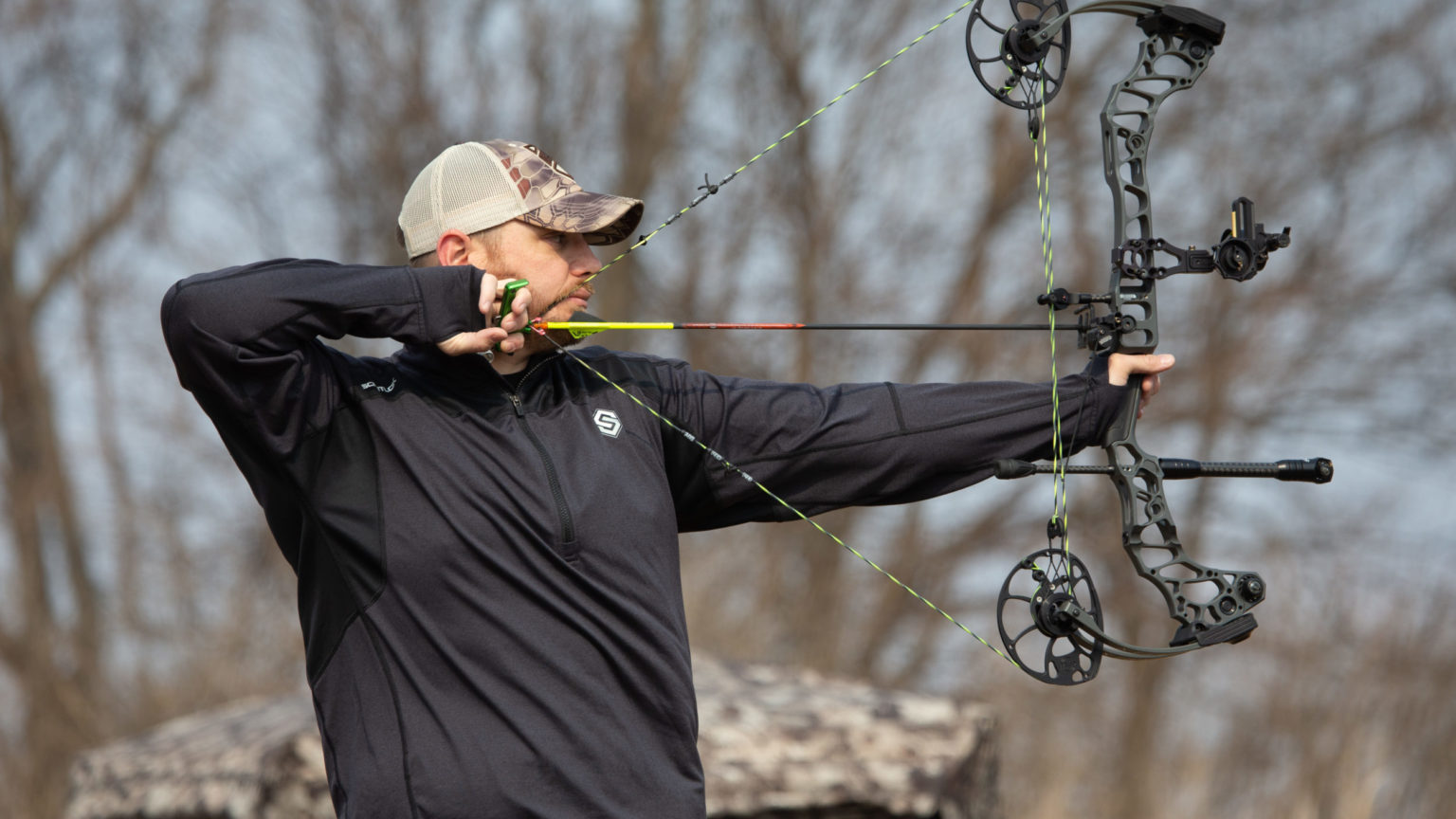
Now that we have touched on some of the equipment on concealment options let’s talk about making it all come together. Its practice time ladies and gentlemen.
Wear your camo, pop up your ground blind and practice shooting from a kneeling, sitting, and standing positions. Get used to shooting out of a ground blind, whether it’s a pop up or one you made out of netting. Shoot with your face mask on. Make sure it doesn’t twist and obscure your vision. Practice not only on a bullseye target but a picture or a 3-D turkey target.
Get yourself not only physically prepared but mentally as well. Work those bugs out so that when the moment of truth arises you can capitalize and play some string music!
It is up to you to prepare yourself for the shot. As the old saying goes, failing to plan is planning to fail. Now since you’re ready to practice what is a recommended shot on a turkey? There are two areas to shoot for. One is the head and the second is the body.
There are special broadheads designed for taking a head shot on a turkey. Now shooting a turkey in the head with a bow can be difficult do to it being a small target, but what I like about a head shot is that it is almost an all or nothing shot. You either smoke him, or you miss him. And if you connect on a head shot there is very little tracking involved on the recovery.
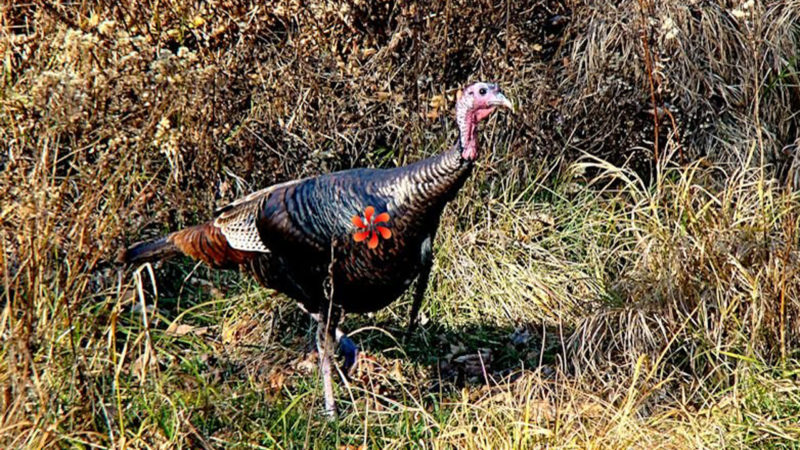
If you are using mechanical broadheads only take body shots. The chest cavity of a turkey is much larger than their head so it does make it an easier target.
The downfall is that you may connect, but there may be some tracking involved in order to recover the bird. There are little tips, like taking a spine or center mass shot on a standing away bird to break him down for a minimal tracking job, but it all boils down to personal preference on what broadhead to shoot and ware to shoot on a turkey.
We have covered some of the basics to playing string music on a long beard. What I covered in this article is not etched in stone. These are basic recommendations for getting started with bow hunting long beards.
It all will come down to your personal preference and your style of hunting, hopefully this article will help get you started in taking a schizophrenic bird with a stick and string and give you some ideas and things to consider when taking on your next long beard adventure.
